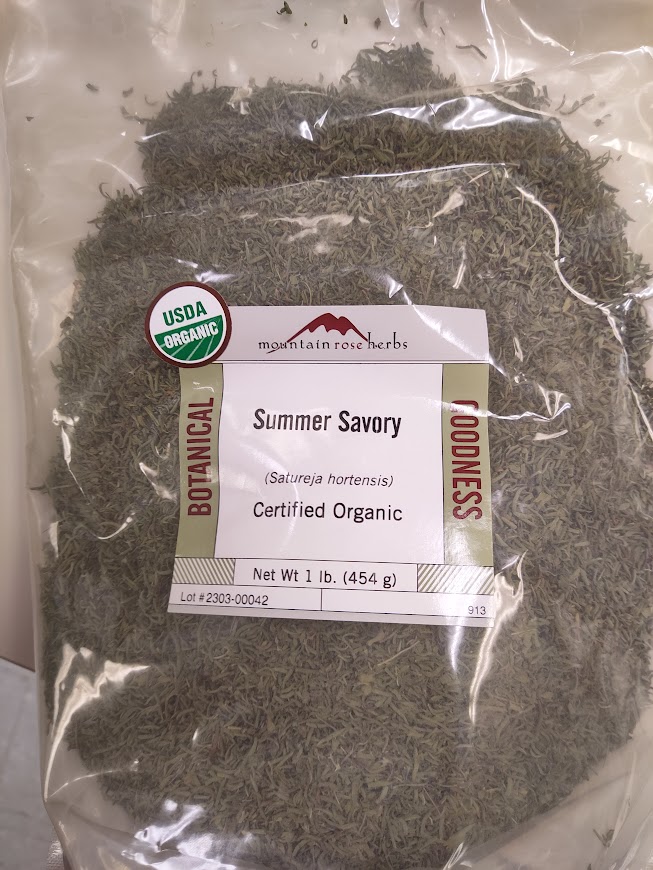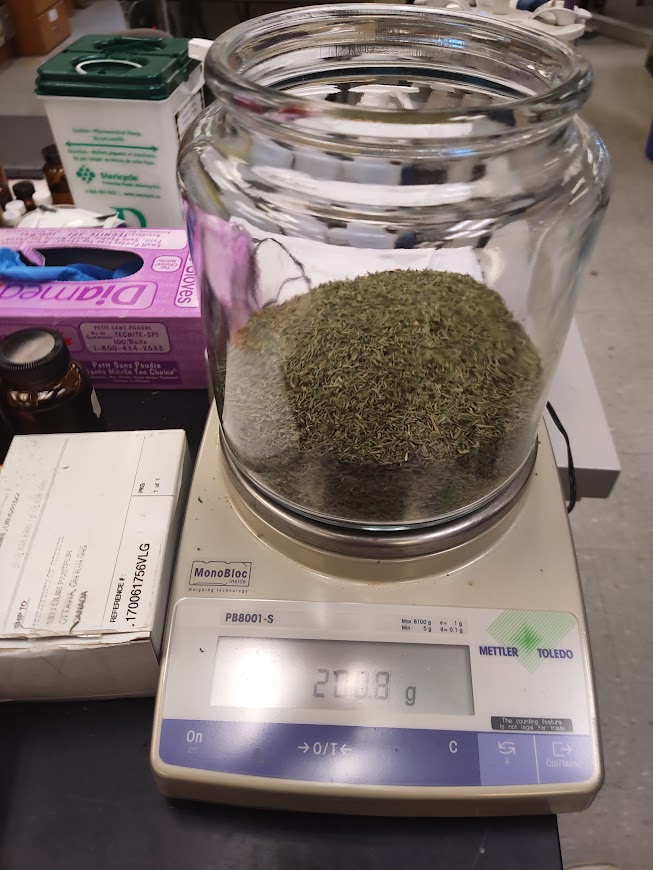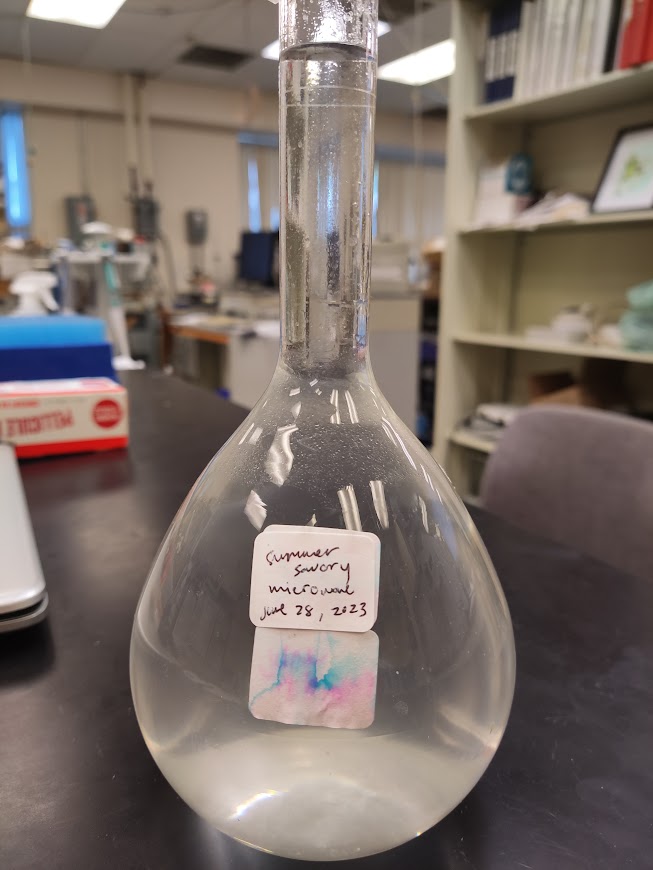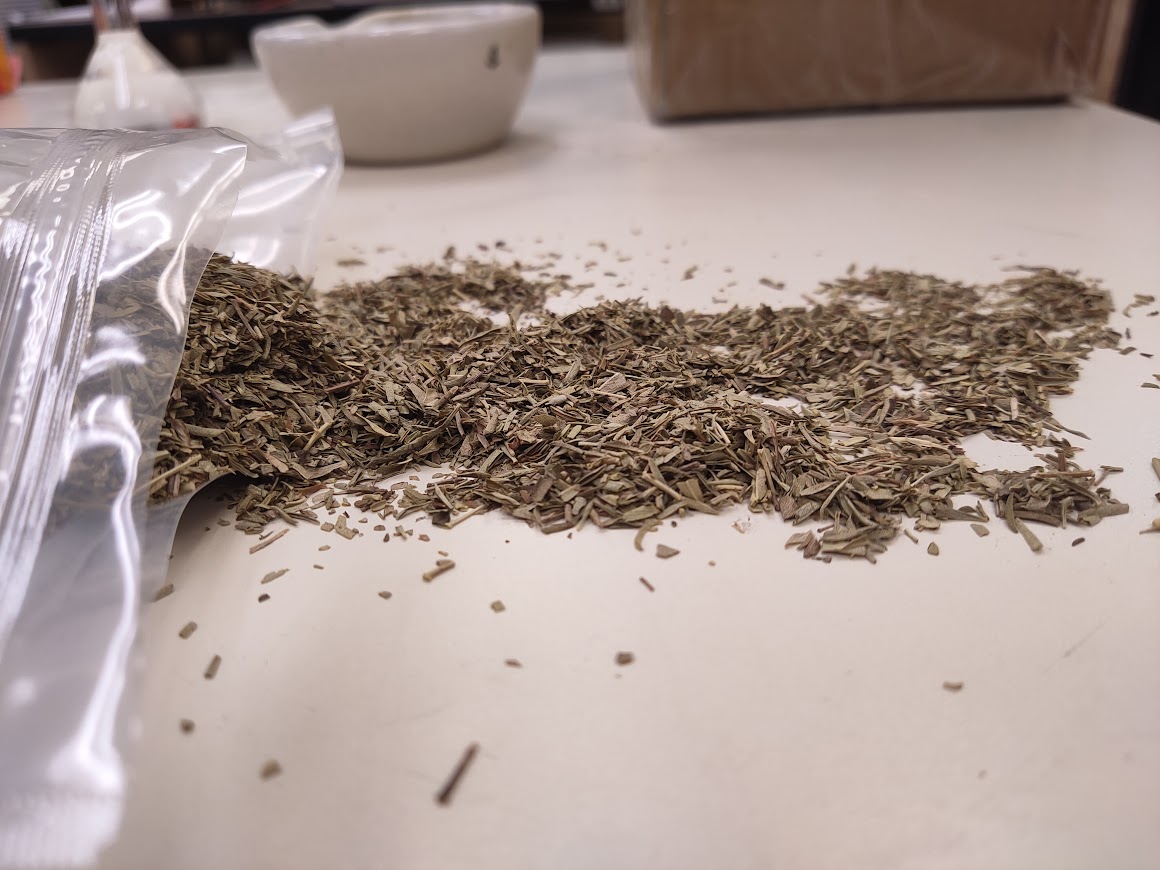
Savory Hydrosols
The savory herbs are the leaves of the savory plants, winter savory (Satureja montana) and summer savory (Satureja hortensis), which typically grow in the warm regions of the Mediterranean, southern Europe, and Africa. It is an herb commonly paired with lighter meats such as chicken and turkey and is also used to flavour soups and stocks. They have an earthy, peppery flavour.

The use of savory dates back to Ancient Rome, around 2000 years ago. The name of the savory genus – Satureja – possibly comes from Pliny the Elder, who derived the name from the word “satyr”, a half-man, half-goat creature from Roman mythology. It could also come from the Hebrew za'atar which was commonly used to refer to all oregano-like plants in the eastern Mediterranean. Historically, it has been used as a poultice in the treatment of insect bites as well as digestive troubles.

I’m Rose Anderson-Duvall, an USRA student working in the J. L. Holmes Mass Spectrometry Facility in summer 2023. I am an undergraduate student entering my third year of Biopharmaceutical Science at
uOttawa. My mother instilled a love of science in me when I was very young, and I never grew out of it. Studying hydrosols is, among many other things, a brilliant insight into the metabolites of plants, a perfect intersection between my two passions, biology and organic chemistry.
Working in this laboratory, I’ve learned how to analyze, identify, and quantify compounds
using the GC-MS in addition to learning various extraction techniques for making hydrosols.

Creation of Savory Hydrosols
202.9 g of dried winter savory was added to a microwave extraction vessel along with 500mL of boiling distilled water. The vessel was left to sit overnight to allow the savory to rehydrate. The next day, a 250mL ice cone was fitted to the lid of the extraction vessel and a 400mL beaker was placed inside the vessel. The whole vessel was placed inside a microwave and set to run for nine minutes on high. After the time had elapsed, the liquid collected in the beaker was transferred to a collection bottle and then the beaker was replaced into the vessel. A new ice cone was fitted to the lid, and the process was repeated for a total of five times. A total of 1.25L of hydrosol was collected. The same process was done with 200.8g of summer savory.

Analysis of Hydrosols
1mL each of the winter savory and summer savory hydrosol was put through SPE (solid phase extraction) respectively in order to remove the water from the hydrosols as well as any large impurities that may clog the GC column. The hydrosol molecules were then eluted from the SPE cartridge using 1mL of a 50/50 AcN:MeOH mix. The samples were then run on the GC-MS so that the compounds in the sample could be identified and quantified.

There were three compounds present in the winter savory hydrosol. The compound present in the highest concentration was carvacrol, which was present at 0.09g/L in the hydrosol. Carvacrol is a monoterpenoid phenol which is present in the hydrosols and essential oils of a variety of herbs and flowers. The second most abundant compound was p-cymen-7-ol, which was at a concentration of 0.01g/L. The final compound was thymoquinone, present at a concentration of only 0.005g/L.
Much like the winter savory, the main compound present in the summer savory is carvacrol. However, the carvacrol is at a much higher concentration in the summer savory (0.37 g/L). The hydrosol also contains γ-terpinene at a concentration of 0.01 g/L, as well as 4-terpineol and o-cymene each at a concentration of 0.004 g/L.
Conclusion
The hydrosol of winter savory has a muted, subtle scent relative to the scents of other hydrosols (ex. ginger, clove). This is reflected in the relatively low concentration of compounds in the hydrosol. However, this means that the scent of the hydrosol isn’t overwhelming, and could have possible aroma therapy and culinary applications. The summer savory however, had a much stronger scent than its counterpart. The carvacrol is at a much higher concentration in the summer savory, meaning it could have medically relevant applications. Carvacrol has shown antibacterial activity according to literature, supposedly being particularly effective against food-borne pathogens. [i] This hydrosol has antimicrobial potential, but further investigation should be done in order to determine if the carvacrol is at a high enough concentration to be effective.
[i]Carvacrol and Human Health: A Comprehensive Review - Wiley Online Library. (n.d.). https://onlinelibrary.wiley.com/doi/10.1002/ptr.6103
